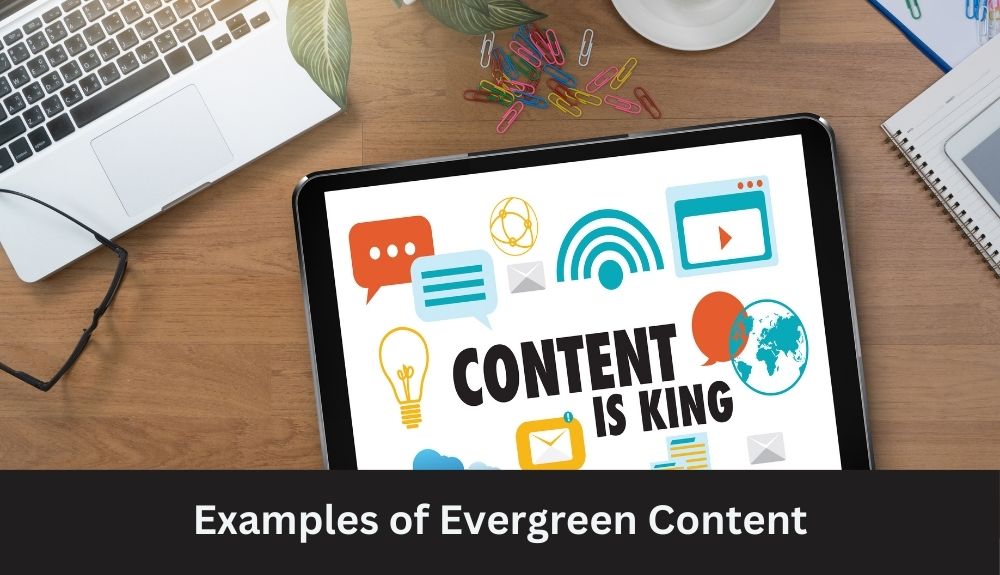In the ever-evolving world of SEO, one strategy stands the test of time – evergreen content. Picture it as a sturdy oak tree in a digital forest, always relevant and continually drawing in visitors like bees to honey. Today, we delve into the realm of evergreen content for SEO, uncovering its power, importance, and tips on how to harness its magic for lasting online success. Let’s embark on this journey together!
What is Evergreen Content?
Evergreen content is the timeless cornerstone of SEO, like a fine wine that only gets better with age. It’s the type of content that remains relevant and valuable to readers long after it’s published, standing strong amidst the ever-changing digital landscape. This enduring quality sets evergreen content apart from trendy topics that fade into obscurity as quickly as they rise.
Unlike news articles or current event pieces, evergreen content tackles subjects that have lasting appeal and continue to interest readers over time. It provides timeless value, answering common questions or addressing perennial concerns within a particular niche. Whether it’s a comprehensive “how-to” guide, an in-depth tutorial, or a definitive listicle, evergreen content aims to educate and inform without an expiration date.
By creating evergreen content, you establish your website as a go-to resource for valuable information in your industry. Your audience will keep returning for reliable insights and guidance on topics they care about most.
The Importance of Evergreen Content in SEO
Evergreen content plays a crucial role in SEO by providing lasting value to your audience. Unlike trendy topics that quickly lose relevance, evergreen content remains timeless and continues to drive traffic to your website long after it’s been published.
By creating evergreen content, you establish your expertise in your niche and become a go-to resource for information. This helps build trust with your audience and encourages them to return to your site for reliable information.
Search engines like Google also favor evergreen content because of its enduring relevance. When users consistently engage with this type of content, it signals search engines that your website offers valuable resources, leading to higher rankings in search results.
Investing time and effort into developing evergreen content can have a significant impact on the long-term success of your SEO strategy. It not only attracts organic traffic but also helps improve brand visibility and authority within your industry.
Examples of Evergreen Content

When it comes to evergreen content, timeless topics reign supreme. How-to guides like “The Ultimate Guide to SEO” or listicles such as “Top 10 Healthy Recipes for Busy Weeknights” are classic examples of evergreen content that continue to be relevant long after their initial publication.
Case studies showcasing successful strategies or in-depth industry analyses also fall under the umbrella of evergreen content. These types of articles provide value to readers regardless of when they come across them.
Another popular form of evergreen content is expert interviews and round-up posts featuring insights from thought leaders in a particular field. These pieces offer unique perspectives and valuable information that stand the test of time.
Furthermore, comprehensive product reviews and comparison articles help consumers make informed decisions even years down the line. By focusing on topics with enduring appeal, you can create a library of resources that consistently drive traffic to your site.
How to Create Evergreen Content
Creating evergreen content is essential for a successful SEO strategy. To start, focus on topics that have lasting relevance and appeal to your target audience. Research keywords with high search volume but low competition to ensure longevity.
When crafting the content, make it comprehensive and informative. Include practical tips, guides, or tutorials that provide value to readers. Use engaging visuals like infographics or videos to enhance the user experience.
Structure your content in a way that is easy to read and digest. Break up long paragraphs into shorter ones and use subheadings for better organization. Incorporate internal links to other relevant articles on your website for improved SEO.
Promote your evergreen content across various channels such as social media, email newsletters, and online communities. Encourage sharing and engagement from users to increase its reach and impact over time.
Updating and Refreshing Evergreen Content
Updating and refreshing evergreen content is crucial to maintain its relevance and effectiveness in SEO. By regularly revisiting your existing content, you can ensure it remains valuable and up-to-date for your audience.
Start by analyzing the performance of your evergreen pieces using analytics tools to identify areas that need improvement or updating. This could involve adding new information, statistics, or examples to keep the content current.
Consider repurposing the content into different formats such as videos, infographics, or podcasts to reach a wider audience and breathe new life into it. Additionally, optimizing keywords and meta tags can help boost its visibility in search engine rankings.
Engage with your readers by encouraging feedback and comments on the updated content to gauge their response and make further enhancements if needed. Remember that evergreen content is an ongoing process that requires continuous monitoring and fine-tuning to remain effective over time.
Measuring the Success of Evergreen Content

Measuring the success of evergreen content is crucial for gauging its impact on SEO performance. One way to measure success is by tracking organic traffic over time. Analyzing the number of visitors drawn to your evergreen pieces can indicate their lasting relevance and value.
Monitoring keyword rankings is another effective method. If your evergreen content consistently ranks high for relevant search terms, it shows that the content resonates with audiences and continues to drive traffic long after publication.
Engagement metrics like bounce rate, time on page, and social shares offer insights into how users interact with your evergreen content. High levels of engagement signal that the content meets users’ needs and interests effectively.
Conversion rates resulting from evergreen content also provide valuable data on its effectiveness in driving desired actions from visitors. By evaluating these metrics regularly, you can fine-tune your evergreen strategy for optimal results.
Conclusion
Evergreen content is a powerful tool in Search engine optimization (SEO) that can drive consistent traffic to your website over time. By creating high-quality, timeless content that continues to be relevant to your audience, you can establish authority in your industry and improve your search engine rankings. Remember to regularly update and refresh your evergreen content to keep it current and engaging for your readers. With the right approach, evergreen content can be a valuable asset in your digital marketing strategy for long-term success.












